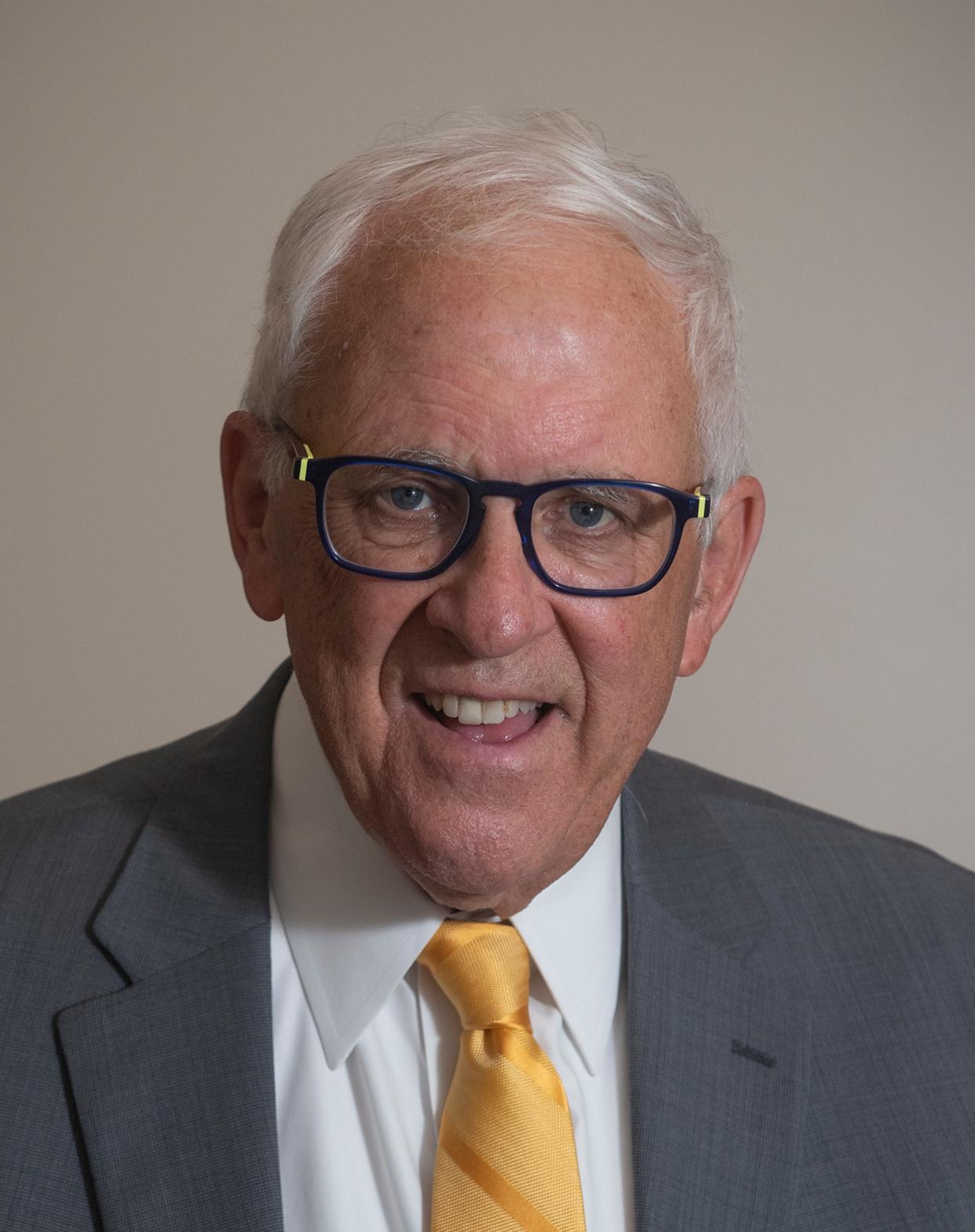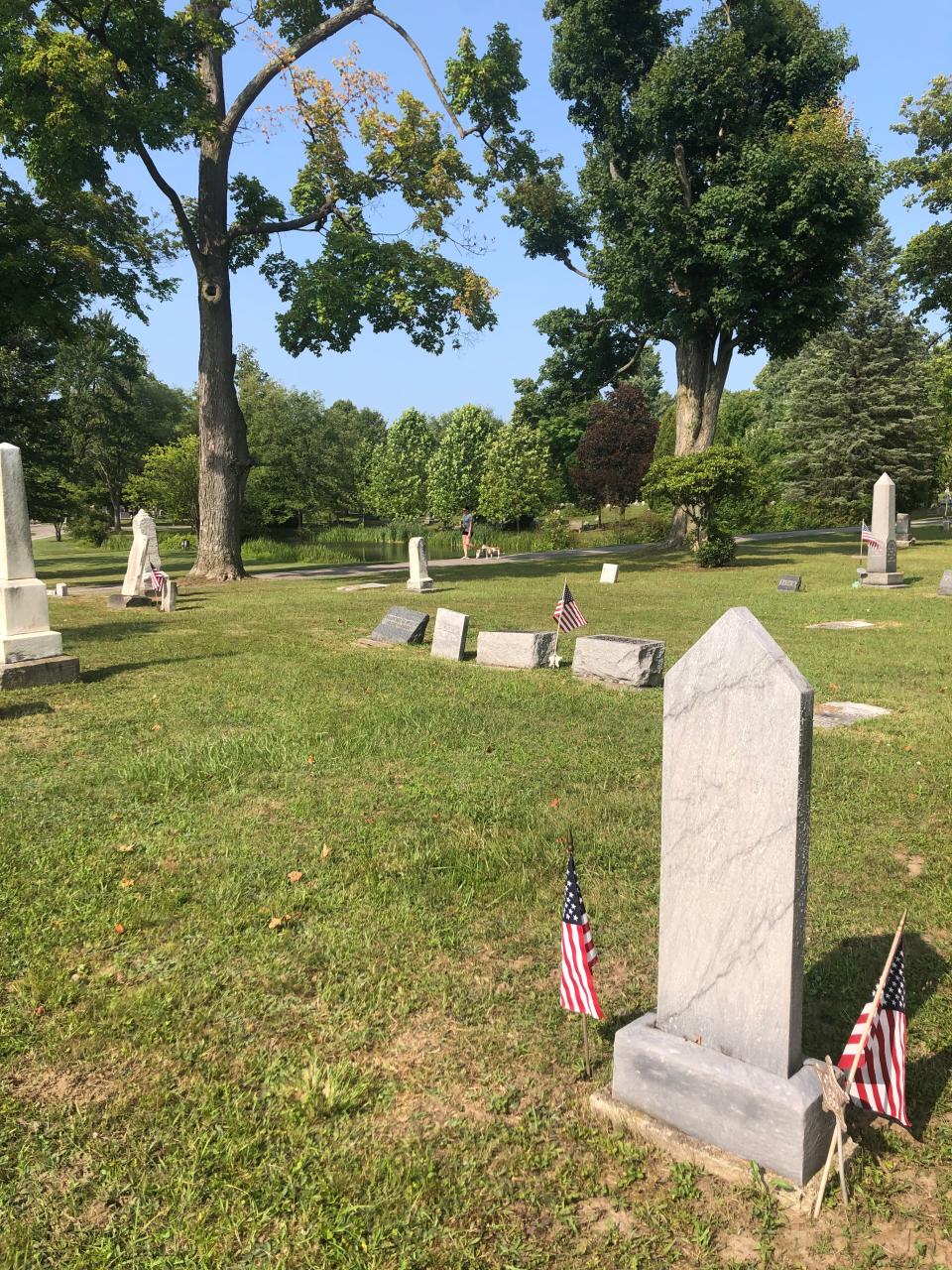Beautiful Maple Grove Cemetery a repository of stories about Ravenna life | Along The Way

- Oops!Something went wrong.Please try again later.
What do the names Aberdeen LeConte, a former slave on a Savannah rice plantation, John Coleman, a former whaling captain whose crew included novelist Herman Melville and Mary Brayton Woodbridge, a talented mathematician who became recording secretary for the National Women's Christian Temperance Union, have in common?
The three are among those who lie in rest in Ravenna’s Maple Grove Cemetery.
I learned that a week ago when Janet and I participated in a small group, one-hour tour of the community’s beautiful cemetery located on 80 acres of rolling terrain immediately south of Loomis Industrial Park. For those not familiar with it, the cemetery is situated on the hill that runs east and west and intersects North Chestnut Street.
The tour was led by Kevin Gray, who as vice president and curator of the Portage County Historical Society, conducts annual walking tours of Maple Grove Cemetery and historic buildings of downtown Ravenna.
Gray, reference librarian at Reed Memorial Library, holds degrees in history and library science from Kent State University and is turning himself into an expert on Ravenna’s history. His next cemetery tour is Sept. 24. Our group had commissioned Gray for the tour, who explained that Maple Grove Cemetery began as a private burial ground the community purchased in 1821.

Telling us that many of the gravesites in the historic southwest section of Maple Grove no longer have gravestones or markers, Gray said some were made out of a brown stone that mostly disintegrated. LeConte, the former slave, who ended up a carpenter in Ravenna after the Civil War, happily retains a marble marker, but its inscription has almost washed away.
Gray explained that LeConte escaped to Sherman’s Army when it was marching from Atlanta to Savannah, the avenging angel that Julia Ward Howe alluded to in her “Battle Hymn of the Republic.” LeConte’s wife and child were not so fortunate. They were taken by the plantation owners further south as they fled Sherman’s approach and he never saw them again.
John Coleman, the Nantucket whaling captain who was served by future novelist Herman Melville, the author of “Moby Dick,” lies buried a good stone’s throw from LeConte. His granite stone, easy to read, is one of several of a Nantucket whaling community who, with whaling declining in the 1840s, decided to head west to Ohio and Ravenna at the suggestion of members of the Massachusetts Tappan family. Benjamin Tappan had founded Ravenna in 1799 and later served Ohio with distinction as a U.S. senator. Coleman may have inspired some of the figures in Melville’s novels, and Melville remembered him as a kinder, better whaler than the obsessed Captain Ahab who chased Moby Dick across the oceans.
Mary Brayton Woodbridge is another of the Nantucket families who emigrated to Ravenna. Her father, Isaac Brayton, became a leader in education in Ravenna and Portage County. As a 9-year-old mathematics whiz in Nantucket, Mary Brayton attracted the attention of Horace Mann, the Massachusetts educator who is called the father of American public education. Marveling at the youngster’s ability to recite the multiplication tables backward and forward into the 20s, Mann reportedly told her to persevere, and she would become a woman of distinction. Mary Brayton Woodbridge eventually became the recording secretary of the National Women’s Christian Temperance Union.
We also saw a stone for Dr. John DeWolf, who in 1825 without the benefit of antiseptic or anesthesia successfully operated on a herniated intestine of 57-year-old William McLaughlin who within four weeks was riding horseback and attending a cattle auction. The operation astonished the world’s medical community and was reported in medical journals as far away as France.
We stopped at the impressive gravestone for Horace Beebe, one of the three at the Republican convention in Chicago in 1860, who switched their support from William Henry Seward to put Abraham Lincoln over the top and on his way to the presidency. We saw a stone for Alexander Turner, who after high school worked for Ravenna’s Dr. Wilford Whitman White, who encouraged him to study medicine. Turner, an African American, eventually obtained a medical degree from the University of Michigan and practiced in Detroit before coming home to Ravenna in retirement, dying in 1944. We also passed a gravesite for Cornelius Reed who in 1924 provided money for construction of Reed Memorial Library.
Cemeteries are the repositories of interesting stories that tell the life of the community. Maple Grove and its paved lanes under beautiful oaks and maples offers those who visit it a park-like setting. During our walking tour, I noticed a jogger. There are five lakes, all man made. Some in prior years served outdoor ice skaters in winter and in summers as an attractive spot for picnickers. An incredible giant oak tree stands near the vault that used to hold caskets when winters made digging graves impossible.

Kevin Gray starts and finishes tours like the one we enjoyed at the attractive yellow brick chapel that was completed in 1903 and used for funerals and other events. The Ladies Cemetery Association raised the money to build the chapel. In years since, it has fallen into disrepair. Attorney Peggy DiPaola, who with the late Jack Schafer raised the money to refurbish Ravenna’s downtown flagpole, says chapel renovation estimates run as high as $200,000.
Raising that sum would be a daunting task, but the result might be a facility well worth the effort.
David E. Dix is a retired publisher of the Record-Courier.
This article originally appeared on Akron Beacon Journal: Tour of Maple Grove Cemetery in Ravenna reveals many stories

